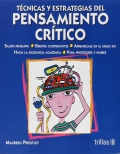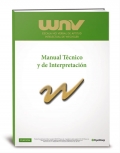
El afectado debe recordar que el tener un ambiente libre de estrés puede reducir la probabilidad de tener un episodio. Es beneficioso en sus partes cuando se evitan tomar estimulantes antes de dormir.
Tratamiento
Tratamiento para el síndrome vieja bruja no está dirigido en la eliminación de la enfermedad en sí
La cura para dicho síndrome no se conoce todavía, como la causa exacta no es definitiva
El curso del tratamiento para el síndrome de vieja bruja está dirigido a gestionar las manifestaciones y evitar la recurrencia de los episodios no deseados:
• La educación adecuada en cuanto a la condición , Esto puede proporcionar el conocimiento por parte de los afectados ayudando así a evitar los factores de riesgo asociados con el síndrome
• El estrés debe ser evitado
• Los medicamentos se proporcionan a los usuarios
Por lo general, una dosis de clonazepam se proporciona a los usuarios en la asistencia a la parálisis de dormir
El nombre del fenómeno proviene de la creencia supersticiosa de que una bruja - o una vieja bruja - se sienta o \"paseos\" el pecho de las víctimas, dejándolos inmóviles
A pesar de que la explicación no se toma muy en serio hoy en día, la naturaleza desconcertante y, a menudo muy alarmante del fenómeno lleva a muchas personas a creer que hay fuerzas sobrenaturales en el trabajo - los fantasmas o demonios
El fenómeno se produce tanto a hombres y mujeres de diversas edades y parece suceder a aproximadamente el 15 por ciento de la población al menos una vez en la vida
Puede ocurrir mientras la víctima está durmiendo durante el día o la noche, y es un fenómeno mundial que ha sido documentada desde la antigüedad
En el siglo segundo, el médico griego Galeno atribuyó a la indigestión,\" de acuerdo a la Enciclopedia de fantasmas y espíritus por Rosemary Ellen Guiley
Algunas personas sufren repetidos ataques durante un período limitado de tiempo, mientras que otros han repetido los ataques durante años
Tratamiento La prevención es posible con esta afección
El paciente debe tomar en cuenta que el conocimiento del problema puede ayudar a evitar otro episodio de síndrome de vieja bruja
El afectado debe recordar que el tener un ambiente libre de estrés puede reducir la probabilidad de tener un episodio
Es beneficioso en sus partes cuando se evitan tomar estimulantes antes de dormir
Evite comer demasiado antes de dormir y no beber bebidas con cafeína son buenas maneras de evitar viejo episodio síndrome de bruja
Fumar también debe restringirse antes de la hora de dormir
Referencias
Abel, E. L. (1995). Circannual changes in the duration of the immobility response of rats in the Forced Swim Test. Physiology and Behavior, 58, 591-593.
Adler, S. R. (1991). Sudden unexpected nocturnal death syndrome among Hmong immigrants: Examining the role of the nightmare. Journal of American Folklore, 104, 54-71.
Adler, S. R. (1994). Ethnomedical pathogenesis and Hmong immigrants sudden nocturnal deaths. Culture, Medicine and Psychiatry, 18, 23-59.
Aloisi, A. M., Panerai, A. E., Carli, G. (1995). Effects of an anti-b-endorphin serum on tonic immobility in rabbits. Pharmacology, Biochemistry and Behavior, 51, 577-579.
American Sleep Disorders Association (1990). The International classification of sleep disorders diagnostic and coding manual. Kansas: Allan Press.
Amir, M. (1971). Patterns of forcible rape. Chicago: University of Chicago Press.
Archer, J. (1979). Behavioral aspects of fear. In W. Sluckin (Ed.). Fear in animals and man. New York, NY: Van Nostrand Reinhold.
Armstrong, K. 1993. A history of God: the 400--year quest of Judaism, Christianity and Islam. New York: Ballantine.
Aserinsky, E., & Kleitman, N. (1953). Regularly occurring periods of ocular motility and concomitant phenomena during sleep. Science, 118, 361-375.
Baez, M. & Volosin, M. (1994). Corticosterone influences forced swim-induced immobility. Pharmacology, Biochemistry and Behavior, 49, 729-736.
Bahktin, M. M. (1981). The dialogical imagination: Four essays. (C. Emerson & M. Holquist, Trans.), Austin, TX: University of Texas Press.
Baillarger, J. (1846), Des hallucinations (Paris, 1846).
Baker, R. A. (1987-88). The aliens among us: Hypnotic regression revisited. Skeptical Inquirer, 12, 148-161.
Baker, R. A. (1992), Alien abductions or alien production? Some not so unusual personal experiences. Lexington, KY: October http://www.ufobbs.com/txt4/3057.ufo
Bechara, A., Damasio, H., Tranel, D. and Damasio, A. R. (1997), Deciding advantageously before knowing the advantageous strategy, Science, 275, pp. 1293-1295.
Bentall, R. P. (1990). The illusion of reality: A review and integration of psychological research on hallucinations, Psychological Bulletin, 107, 82-95.
Bentall, R. P. (2000). Hallucinatory experiences, in Varieties of Anomalous Experience, ed. E. Cardeña, S. J. Lynn, and S. Krippner (Washington: APA), pp. 85-120.
Bergson, H. (1958), The World of Dreams, tr. W. Baskin (New York: Philosophical Library. Original published in 1901).
Blackmore, S. (1988). A theory of lucid dreams and OBEs. In J. Gackenbach, & S. LaBerge (Eds.) Conscious mind, sleeping brain: Perspectives on lucid dreaming (pp. 373-387). New York: Plenum.
Blackmore, S. (1998). Abduction by aliens or sleep paralysis? Skeptical Inquirer, 22, 23-28.
Bloom, J., & Gelardin, R. (1976). Eskimo sleep paralysis. Arctic, 29, 20-26.
Boring, E. G. (1950). A history of experimental psychology (2nd edition). New York: Appleton-Century-Crofts.
Braud, W. G. & Ginsburg, H. J. (1973). Immobility reactions in domestic fowl (Gallus gallus) less than seven days old: resolution of a paradox. Animal Behaviour, 21, 104-108.
Braun, A. R., Balkin, T. J., Wesensten, N. J., Carson, R. E., Varga, M., Baldwin, P., Selbie, S. Belenky, G., & Herscovitch, P. (1997). Regional cerebral blood flow throughout the sleep-wake cycle. Brain, 120, 1173-1197.
Brewster, J. & Leon, M. (1980). Facilitation of maternal transport by Norway rat pups. Journal of Comparative and Physiological Psychology, 94, 80-88.
Browne-Goode, G. (1962). Sleep paralysis. Archives of Neurology, 6, 228-234.
Bruhwyler, J., Liegeois, J. F., Lejeune, C. Rogister, et. al., (1995). New dibenzazepine derivatives with disinhibitory and/or antidepressant potential: Neurochemical and behavioural study in the open-field and forced swimming tests. Behavioural Pharmacology, 6, 830-838.
Burges, A. W. & Holmstrom, L. L. (1974). Coping behavior of the rape victim. American Journal of Psychiatry, 133, 413-417.
Calvo. J. M. & Fernández-Guardiola, A. (1984). Phasic activity of the basolateral amygdala, cingulate gyrus, and hippocampus during REM sleep in the cat. Sleep, 7, 202-210.
Campbell, R. (1989). Foreward. In G. de Maupassant, The dark side. (A. Kellet, Trans.) New York: Carrol & Graf.
Carli, G, (1968). Brain Research, 11, 453-456.
Carskadon, M. A., & Dement, W. C. (1989). Normal human sleep: An overview. In M. H. Kryger, T. Roth, & W. C. Dement (Eds.), Principles of and practice of sleep medicine (pp. 3-13). Philadelphia: Saunders.
Charney, D. S., Grillon, C., & Bremner, J. D. (1998). The neurobiological basis of anxiety and fear: Circuits, mechanisms, and neurochemical interactions (Part 1), The Neuroscientist, 4, 35-44.
Chase, M. H., & Morales, F. R. (1989). The control of motoneurons during sleep. In M. H. Kryger, T. Roth, & W. C. Dement (Eds.). The principles and practice of sleep medicine (pp. 74-85). Philadelphia: W. B. Saunders.
Cheyne, J. A. (2000a). Being conscious of the other: Sensed presence and other hallucinations, under review.
Cheyne, J. A. (2000b). Effects of Body Position on Sleep Paralysis and Hypnagogic and Hypnopompic Hallucinations. In preparation.
Cheyne, J. A. (2000). Play, dreams, and simulation. Behavioral and Brain Sciences, 8,
Cheyne, J. A. and Tarulli, D. (1999), Dialogue, difference, and voice in the Zone of Proximal Development, Theory and Psychology, 9, 5-28.
Cheyne, J. A., & Tarulli, D. (1998). Paradigmatic Psychology in Narrative Perspective: Adventure, Ordeal, and Bildung. Narrative Inquiry, 8, 1-24.
Cheyne, J. A., Newby-Clark, I.R., and Rueffer, S.D. (1999). Sleep paralysis and associated hypnagogic and hypnopompic experiences, Journal of Sleep Research, 8, 313-317.
Cheyne, J. A., Rueffer, S. D., and Newby-Clark, I. R. (1999), Hypnagogic and hypnopompic hallucinations during sleep paralysis: Neurological and cultural construction of the night-mare, Consciousness and Cognition, 8, 319-337.
Cheyne, J. A., Rueffer, S. D., and Newby-Clark, I. R. (1999), Hypnagogic and hypnopompic hallucinations during sleep paralysis: Neurological and cultural construction of the night-mare. Consciousness and Cognition, 8, 319-337.
Clark, A. (1997), Being There: Putting Brain, Body, and World together again (Cambridge, MA: MIT press).
Clark, S. E., & Loftus, E. F. (1996). The construction of space alien abduction memories. Psychological Inquiry, 7, 140-143.
Clarke, G. (1991). Edgar Allan Poe: Critical assessments (Vol 1). Mountfield, East Sussex: Helm.
Cleghorn, J. M., Franco, S., Szechtman, B., Kaplan, R. D., Szechtman, H., Brown, G. M., Nahnias, C., Garnett, E. S. (1992). Toward a brain map of auditory hallucinations. American Journal of Psychiatry, 149, 1062-1069.
Coenen, A. M. L. (1998). Neuronal phenomena associated with vigilance and consciousness: From cellular mechanisms to Electoencephalographic patterns. Consciousness and Cognition, 7, 42-53.
Coenen, A. M. L., & Vendrick, A. J. H. (1972). Determination of the transfer ratio of cats geniculate neurons through quasi-intracellular recordings and the relation with level of alertness. Experimental Brain Research, 14, 227-242.
Cogny, P. (1970). Introduction. In G. de Maupassant, le Maupassant du \"Horla.\" Paris: Minard.
Cosnett, J. E. (1992). Charles Dickens: Observer of sleep and its disorders. Sleep, 15, 264-267.
Cruz, F. de la, & Junquera, J. (1993). The immobility response elicited by clamping, bandaging, and grasping in the mongolian gerbil (Meriones unguiculatus). Behavioural Brain Research, 54, 165-169.
Daly, D. D. & Yoss, R. E. (1974). Narcolepsy. In O. Magnus & A. M. Lorenz de Haas (Eds.). The Handbook of Clinical Neurology: Vol 15. The Epilepsies. Amsterdam: North Holland Publishing Company.
Damasio, A. R. (1994), Descartes Error: Emotion, Reason, and the Human Brain (New York: Putnam).
Damasio, A. R. (1999), The Feeling of What Happens: Body and Emotion in the Making of Consciousness (New York: Harcourt Brace and Company).
Darwin, C. R. (1884). Postumous essay on instinct. In G. J. Romanes (Ed.), Mental evolution in animals. New York: AMS Press
Dawkins, R. (1976). The selfish gene. Oxford: Oxford University Press.
de Maupassant, G. (1970). Le Maupassant du \"Horla\". Paris: Minard.
Dement, W. C., & Kleitman, N. (1957). The relation of eyemovements during sleep to dream activity: An objective method for the study of dreaming. Journal of Experimental Psychology, 53, 339-346.
Devinsky, O., Feldmann, E., Burrowes, K. & Bromfield, E. (1989). Autoscopic phenomena with seizures. Archives of Neurology, 46, 1080-1088.
Devinsky, O., Morrell, M. J., Vogt, B. A. (1995). Contributions of anterior cingulate cortex to behavior. Brain, 118, 279-306.
Dixon, M., & Lawrence, J.-R. (1992) Two hundred years of hypnosis research: Questions resolved? Questions unanswered! In E. Fromm, & M. R. Nash (Eds.). Contemporary hypnosis research. New York: Guilford.
Doty, R. L. (1969). The effect of environmental movement upon the duration of tonic immobility in bobwhite quail. Psychonomic Science, 16, 48-49.
Douglas, N. J. (1994). Breathing during sleep in normal subjects. In R. Cooper (Ed.). Sleep (pp. 76-95). London: Chapman.
Ellenberger, H. F. (1970). The discovery of the unconscious: The history and evolution of dynamic psychiatry. New York: Basic Books.
Ellis, R. D. (1999), Dynamical systems as an approach to consciousness: Emotion, self-organization, and the mind-body problem, New Ideas in Psychology, 17, pp. 237-250.
Ellis, W. (1988). The varieties of alien experience. The Skeptical Inquirer, 12, 263-269.
Ewer, R. F. (1973). The carnivores. Ithica, NY: Cornell University Press (pp. 293-357).
Eysenck, M. W. (1992). Anxiety: The cognitive perspective. Hove, UK: Erlbaum
Fénelon, G., Mahieux, F., Huon, R., and Ziégler, M. (2000), Hallucinations in Parkinsons disease: Prevalence, phenomenology and risk factors, Brain, 123, pp. 101-113.
Finger, S. (1994). Origins of Neuroscience: A history of explorations into brain science. Oxford: Oxford University Press.
Firestone, M. (1985). The \"Old Hag\" sleep paralysis in Newfoundland. Journal of Psychoanalytic Anthropology, 8, 47-66.
Flanagan, O. (1992), Consciousness Reconsidered (Cambridge, MA: MIT Press).
Fleischmann, A. & Urca, G. (1988). Clip induced analgesia and immobility in the mouse: Activation by different sensory modalities. Physiology and Behavior, 44, 39-45.
Fleischmann, A. & Urca, G. (1993). Tail-pinch induced analgesia and immobility: Altered responses to noxious tail-pinch by prior pinch of the neck. Brain Research, 601, 28-33.
Foster, G. M. (1973). Dream character and cognitive orientation in Tzintzuntzan. Ethos, 1, 106-121.
Foulkes, D. & Vogel, G. (1965). Mental activity at sleep onset. Journal of Abnormal Psychology, 70, 231-243.
Fukuda, K. (1989). Preliminary study on kanashibari phenomenon: A polygraphic approach. Japanese Journal of Physiological Psychology and Psychophysiology, 7, 83-89.
Fukuda, K. (1989). Preliminary study on kanashibari phenomenon: A polygraphic approach. Japanese Journal of Physiological Psychology and Psychophysiology, 7, 83-89.
Fukuda, K. (1993). One explanatory basis for the discrepancy of reported prevalences of sleep paralysis among healthy respondents. Perceptual and Motor Skills, 77, 803-807.
Fukuda, K. (1994). Sleep paralysis and sleep-onset REM period in normal individuals. In Sleep onset: Normal and abnormal processes. (Robert D. Ogilvie, John R. Harsh, Eds.), pp. 161-181. Washington, DC: American Psychological Association.
Fukuda, K., Miyasita, M., & Ishihara, K. (1987). High prevalence of isolated sleep paralysis: Kanashibari phenomenon in Japan. Sleep, 10, 279-286.
Fukuda, K., Miyasita, M., & Ishihara, K. (1987). High prevalence of isolated sleep paralysis: Kanashibara phenomenon in Japan. Sleep, 10, 279-286.
Fukuda, K., Ogilvie, R.D., Chilcott, L., Vendittelli, A.M., & Takeuchi, T. (1998). The prevalence of sleep paralysis among Canadian and Japanese college students. Dreaming, 8, 59-66.
Gadamer, H-G. (1988). Truth and Method (2nd rev. ed.). (J. Weinsheimer, & D. G. Marshall, Trans.). New York: Crossroad. (Original work published in 1960).
Gallagher, S. and Marcel, A. J. (1999), The self in contextualized action, Journal of Consciousness Studies, 6, pp. 4-30.
Gallup, G. G. Jr. & Rager, D. R. (1996). Tonic immobility as a model of extreme stress of behavioral inhibition: Issues of methodology and measurement. In. P. R. Sanberg, K. P. Ossenkopp, M. Kavaliers, (Eds.) Motor activity and movement disorders: Research issues and applications. Contemporary neuroscience. 57-80. Totowa, NJ: Humana Press.
Gallup, G. G. Jr., Boren, J. L., Suarez, S. D., Wallnau, L. B. & Gagliardi, G. J. (1980). Evidence for the integrity of central processing during tonic immobility, Physiology and Behavior, 25, 189-194.
Gallup, G. G., Jr. & Maser, J. D. (1977). Catatonia: Tonic immobility: Evolutionary underpinnings of human catalepsy and catatonia. In J. D. Maser, M. E. P. Seligman, (Eds.) Psychopathology: Experimental models. (pp. 334-357). San Francisco, CA: W. H. Freeman.
Gallup, G. G., Jr. (1974). Animal hypnosis: Factual status of a fictional concept. Psychological Bulletin, 81, 836-853.
Geduld, H. M. (1983). The definitive Dr. Jekyll and Mr. Hyde Companion. New York: Garland.
Geertz, C. (1973). The interpretation of cultures. New York: Basic Books.












